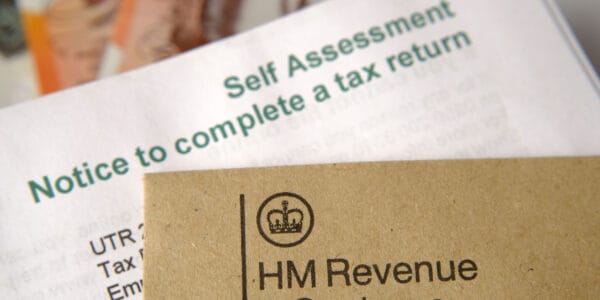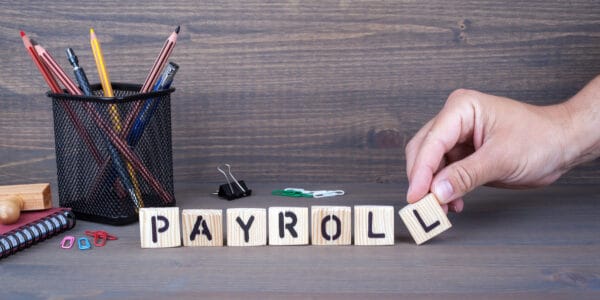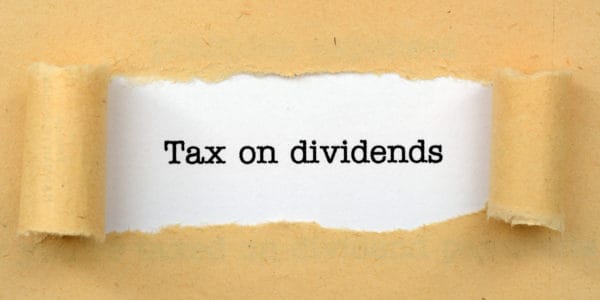Limited liability partnerships (LLPs) may share certain similarities with limited companies, but their tax requirements are very different. Every LLP and each of its members must file an annual tax return through Self Assessment. The LLP members are then taxed individually on their share of the partnership’s profits. The LLP itself is not actually subject to any tax – it’s simply a vehicle through which the partners trade.
This guide explains all of the Self Assessment obligations associated with running a limited liability partnership, including:
- registering an LLP for Self Assessment
- preparing and filing an annual Partnership Tax Return
- the requirement of LLP members to report their share of LLP profits to HMRC
- paying tax on LLP profits
By the end of this post, you should have a good understanding of the tax treatment and Self Assessment requirements of limited liability partnerships and LLP members.
Registering a limited liability partnership for Self Assessment
Regardless of how a business is structured, it will have financial reporting and tax obligations to fulfil for HMRC. Limited liability partnerships are no different, despite being treated as transparent for tax purposes.
Tax transparency simply means that, for tax purposes, an LLP’s activities are deemed to have been undertaken by the LLP members (partners) rather than the partnership itself. This differs from the tax treatment of limited companies and their requirement to pay Corporation Tax on profits.
Even though it is the members of a limited liability partnership who are responsible for paying tax on business profits, you still need to report the LLP’s income, gains, expenditures, and profits or losses to HMRC. This is carried out through Self Assessment.
You do not have to contact HMRC to register your LLP for Self Assessment. When you set up a limited liability partnership, Companies House will automatically notify HMRC on your behalf.
HMRC will then create a tax record for the business and send a letter to your registered office address. This letter will contain the partnership’s Unique Taxpayer Reference (UTR) and information on the LLP’s tax-related obligations.
To access your LLP’s business tax record online, you have to sign in to your Government Gateway account. If you are a new user of Government Gateway, you can create sign-in details for a new account when you use the service for the first time. You will need to provide the LLP’s UTR during this process.
Each LLP member must separately register for Self Assessment with HMRC. We will discuss this requirement in detail later in the post.
Preparing and filing an annual Partnership Tax Return
To report your LLP’s income and calculate the tax liability of each member, you must complete and file an annual Partnership Tax Return through Self Assessment. HMRC will send one to you each year, usually in April after the end of the tax year.
The Partnership Tax Return (form SA800) consists of 8 pages and covers certain types of income. Supplementary pages are available if you need to report less common types of income and any disposals of chargeable assets.
You cannot use the Self Assessment online filing service to submit your LLP’s Partnership Tax Returns. If you wish to file it online, you will need to purchase commercial software. Alternatively, you can download and print form SA100 (and any supplementary pages required), complete it by hand, and send it to HMRC by post.
Completing the tax return
At the start of the tax return, you must first answer a series of 6 questions about the partnership’s business and investment income. These are used to check whether you have all of the pages required to make a complete return of the partnership’s income and related information for the year you are reporting.
To complete the rest of the Partnership Tax Return for your limited liability partnership, you will need to provide the following information:
- registered name of the business
- description of the partnership’s trade or profession
- accounting period
- any capital allowances that you are claiming
- income and allowable expenses
- taxable profit or loss
- information about your business assets or liabilities (if the LLP accounts include a balance sheet)
- a completed Partnership Statement with details of each LLP member – name, address, date of appointment, personal UTR, National Insurance number, and a summary of their share of LLP profits, losses, income, and tax credits
- declaration and signature of the nominated partner (the designated member responsible for completing the tax return)
There are two types of Partnership Statements: a ‘short’ version and a ‘full’ version.
You should complete the short Partnership Statement if your LLP has only trading or professional income and interest, or alternative finance receipts from banks, building societies, or other deposit takers.
The full version covers all possible types of partnership income, so you will use this one if your LLP:
- had earnings from sources other than trading and professional income
- received taxed interest from banks or building societies
The Partnership Tax Return that HMRC sends to you will include only the short Partnership Statement. If you require the ‘full’ version – Partnership Statement SA800(PS) – you will need to download the supplementary form and attach it to your tax return.
Do not send any of the LLP’s financial records with the Partnership Tax Return. However, you must keep hold of these records for at least 5 years from 31 January following the tax year of the return. For example, for the 2024/25 tax year, keep all relevant records until at least 31 January 2031.
You must provide each LLP member with a copy of their allocation of profits, losses, income, and tax credits as soon as possible. They will need this information when completing their personal Self Assessment tax return.
Filing deadline
The deadline for filing a Partnership Tax Return for your limited liability partnership depends on whether you are submitting it online or by post:
- If you are filing a paper tax return by post, it must reach HMRC by 31 October following the end of the tax year
- If you are filing a tax return online, it must reach HMRC by 31 January following the end of the tax year
For example, when submitting a tax return for the 2024/25 tax year, which ends on 5 April 2025, the deadline is:
- 31 October 2025 for paper tax returns
- 31 January 2026 for online tax returns
However, you may have longer to file if HMRC gives you notice to make the Partnership Tax Return after 31 July, or if any of the LLP’s members are companies.
For example, if notice is given after 31 July 2025 but on or before 31 October 2025, you must file the tax return by the later of either:
- 3 months from the date on which the notice is given to you – if you are sending a paper tax return
- 31 January 2026 – if you are sending an online tax return
Where HMRC gives you notice to make the 2024/25 Partnership Tax Return after 31 October 2025, you must file it no later than 3 months from the date on which the notice was given, regardless of whether you are sending it on paper or online.
Notice is ‘given’ on the day that it is delivered to you. HMRC normally assumes that delivery will have taken place within 7 days of the date of issue stated on the front of the return.
Late filing penalties
If you fail to deliver the Partnership Tax Return by the relevant filing deadline, every person who was an LLP member during the return period will be liable to an automatic late filing penalty of £100.
Additional late filing penalties will apply to each member if the delay continues:
- over 3 months late – £10 penalty per day for a maximum of 90 days (£900)
- over 6 months late – a fixed penalty of £300
- over 12 months late – a further fixed penalty of £300
You can appeal these penalties if you believe that you met the filing deadline or have a reasonable excuse for missing it. A reasonable excuse is typically an unexpected or unusual event that was beyond your control and caused you to miss the deadline.
Once you have submitted your Partnership Tax Return
When HMRC receives your completed Partnership Tax Return, they will process it using the figures you have provided. If they spot any obvious errors, they may correct them and then tell you what they have done. If they are unsure about any of the figures or information you provided, they may contact you for clarification.
Once processed, HMRC will check the Partnership Tax Return. This could happen at any time up to 12 months after it has been received. Enquiries may be made about the figures, and you might be asked to provide the records that you used for these. HMRC may also check the figures provided against any information received from other sources (e.g. your bank).
If your Partnership Tax Return is incorrect
Whilst the nominated designated member is responsible for completing and filing the Partnership Tax Return, all members of the LLP are deemed responsible for its accuracy. HMRC checks all tax returns carefully, so you must take care.
If it is incorrect and the members have paid too much tax, HMRC will reimburse the overpaid amount plus interest. If it is discovered that the members have not paid enough tax, HMRC will request further tax. The partners may also have to pay interest on the underpaid amount from the original due date, in addition to a late payment penalty.
Where a Partnership Tax Return is incorrect because the nominated member has failed to take reasonable care, each member of the LLP may face a penalty ranging from 30%-100% of the difference between the correct amount of tax due on their share of the partnership profits and the amount due based on the figures provided in the tax return.
The penalty could be as much as 200% if the undeclared income or gains arose outside the UK. In extreme cases, HMRC may also prosecute the members for deliberate errors.
If you discover after submitting the tax return that you have made a mistake, you should contact HMRC immediately by calling the Self Assessment Helpline on 0300 200 3310.
Self Assessment requirements for LLP members
With the exception of certain salaried members (more on this later), LLP members are taxed on a self-employed basis. This means that, in addition to filing a Partnership Tax Return, each LLP member must declare their share of any profit or loss by filing a personal Self Assessment tax return (form SA100) and one of the following:
- The SA104S supplementary pages (short version) – if you are only declaring partnership trading income, and interest or alternative finance receipts received after the deduction of tax from banks or building societies.
- The SA104F supplementary pages (full version) – if you do not qualify to complete the short version. This form covers all possible types of partnership income that you might receive.
The members then pay Income Tax and Class 4 National Insurance contributions (NIC) on their allocated share of the partnership profits and capital gains.
If you are a member of a limited liability partnership and need to send a personal tax return, you must first register for Self Assessment as an individual using form SA401. The registration deadline is 5 October after the end of the tax year that you need to report in the return.
How to register
Most people register online. To do so, you will need your Government Gateway sign-in details. If you don’t already have an account, you’ll need to create sign-in details when you use the online service. It’s very straightforward – just follow HMRC’s simple on-screen instructions.
You can also register by:
- completing the form on-screen, printing a copy, and posting it to HMRC
- printing the form, filling it in by hand, and posting it to HMRC
Whichever method of registration you decide to use, you must provide the following details on form SA401:
- name, address, and telephone number
- date of birth
- National Insurance number
- your personal UTR, if you have previously registered for Self Assessment
- whether or not you are the nominated partner for the LLP
- date your self-employment began
- name and registered office address of the LLP
- nature of the business being carried out through the partnership
- date you joined the LLP
- the partnership UTR, if one has been allocated already
-
whether you are entitled to a share of the profits, losses, and other income from the LLP
HMRC will use the information on the form to determine your Self Assessment requirements. You will receive a personal UTR within a few weeks of registration (if you don’t already have one).
Filing a Self Assessment tax return as an LLP member
After each tax year, you must complete and file a personal Self Assessment tax return and form SAl04 (short or full version). You can do this online, which is the most common filing method, or by post. If you need to send a paper tax return, call HMRC and request form SA100.
The filing deadline is 31 October (paper tax return) or 31 January (online tax return).
On the main Self Assessment tax return (form SA100), you will enter information (where relevant) about:
- interest and dividends received
- allowable expenses
- certain tax reliefs
- Student Loan and Postgraduate Loan repayments
- High Income Child Benefit Charge
- Marriage Allowance
- any repayments you are claiming
You must then complete the relevant SA104 supplementary pages. These are listed on HMRC’s website as ‘SA104S: Partnership (Short)’ and ‘SA104F: Partnership (Full)’. The information required includes:
- your personal Unique Taxpayer Reference
- the partnership UTR
- your share of the LLP’s trading or professional profits and losses
- your share of untaxed partnership income from other sources, if applicable (‘full’ version only)
You will need to refer to the Partnership Statement to be able to complete this part of your tax return.
There are several other supplementary pages for reporting different types of personal income (e.g. from employment, property, or capital gains). Be sure to check these carefully and include all relevant supplementary pages, not just those related to income from the LLP.
If you file online, your tax and National Insurance liability will be automatically calculated and shown when you finish your tax return. If you submit a paper tax return, HMRC will work out your Self Assessment tax bill and send it to you by post before the 31 January payment deadline.
You will also receive a tax calculation telling you whether you have to make payments on account (advance payments) for the next tax year. This normally happens when your tax bill is more than £1,000.
Salaried members
In some limited liability partnerships, there may be individual members who are more like employees than ‘traditional’ self-employed partners. These individuals are subject to Salaried Member rules, which means that they are paid and taxed through PAYE (rather than Self Assessment).
To be classed as a salaried member, the person must satisfy the following 3 conditions:
- Condition A – they are rewarded like an employee and at least 80% of their remuneration is a ‘disguised salary’ that has no reference to the partnership’s profitability.
- Condition B – they do not have significant influence over the affairs of the limited liability partnership as a whole.
- Condition C – the individual’s capital contribution to the LLP is less than 25% of the disguised salary that they can reasonably expect to receive in the relevant tax year.
If all of those conditions are satisfied, the LLP must pay the salaried member through PAYE, deducting Income Tax and Class 1 employee National Insurance contributions from their earnings. The partnership will also be subject to Class 1 employer’s National Insurance contributions on the salaried member’s remuneration.
Paying tax on LLP profits
As a self-employed LLP member, you are responsible for paying any tax and NIC that you owe on your share of the partnership profits. You must pay your Self Assessment tax bill through your own tax account.
You can pay your tax bill using any of the following methods:
- online or telephone banking
- CHAPS
- debit or corporate credit card online
- at your bank or building society
- Bacs
- Direct Debit
- cheque
The payment deadline is 31 January after the end of the tax year. This is the same date that your tax return is due. For example, for the 2024/25 tax year, you must pay your Self Assessment bill in full by 31 January 2026. If you pay late, HMRC will impose a penalty and apply interest on the overdue amount.
Thanks for reading
Accounting and taxation requirements for limited liability partnerships are notoriously complex. These are specialist areas that require expertise and a thorough understanding of the LLP business structure. We recommend seeking professional guidance from an experienced accountant or tax advisor.
Pop a comment below if you have any questions about this post, or get in touch with our team of company formation experts if you’d like to set up an LLP or find out more about our range of services.
Please note that the information provided in this article is for general informational purposes only and does not constitute legal, tax, or professional advice. While our aim is that the content is accurate and up to date, it should not be relied upon as a substitute for tailored advice from qualified professionals. We strongly recommend that you seek independent legal and tax advice specific to your circumstances before acting on any information contained in this article. We accept no responsibility or liability for any loss or damage that may result from your reliance on the information provided in this article. Use of the information contained in this article is entirely at your own risk.














Join The Discussion